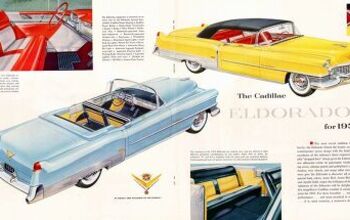Honda and Acura EVs to Join Tesla's Supercharger Network Starting in 2025

Last month, we reported that Honda and Acura would join Tesla’s North American Charging Standard (NACS). The Japanese automakers rely on General Motors’ EV technology for some new models, and the U.S. company committed to Tesla’s standard early on, so it wasn’t a surprising development that Honda would follow suit. Yesterday, the automakers confirmed the reports and put a timeline on the commitment, stating that they would implement the plugs in new EVs starting in 2025.
The automakers’ two new EVs, the Honda Prologue and Acura ZDX, both rely on GM’s Ultium platform and battery technology, which gave them a jump start on new vehicle development but tied them to GM’s decisions on evolving and refining the platform. General Motors said it would make the transition to NACS in 2024.
Honda also joined forces with Hyundai, Kia, Stellantis, BMW, GM, Mercedes-Benz, and others on plans to develop another nationwide charging network of DC fast chargers. Their efforts add to new projects from public and private businesses and government agencies to build out a more comprehensive national charging network.
Many of today’s EV chargers are unreliable and don’t reach their advertised charging speeds. Companies like Electrify America, EVGo, and ChargePoint have locations across the country, but they struggle with downtime, and their payment systems are infuriating in the best of times. Tesla’s Supercharger network is regarded as being more reliable and easier to use, but it’s also frequently at capacity, leaving drivers with long wait times to access a charger.
[Image: Honda]
Become a TTAC insider. Get the latest news, features, TTAC takes, and everything else that gets to the truth about cars first by subscribing to our newsletter.

Chris grew up in, under, and around cars, but took the long way around to becoming an automotive writer. After a career in technology consulting and a trip through business school, Chris began writing about the automotive industry as a way to reconnect with his passion and get behind the wheel of a new car every week. He focuses on taking complex industry stories and making them digestible by any reader. Just don’t expect him to stay away from high-mileage Porsches.
More by Chris Teague
Latest Car Reviews
Read moreLatest Product Reviews
Read moreRecent Comments
- Todd In Canada Mazda has a 3 year bumper to bumper & 5 year unlimited mileage drivetrain warranty. Mazdas are a DIY dream of high school auto mechanics 101 easy to work on reliable simplicity. IMO the Mazda is way better looking.
- Tane94 Blue Mini, love Minis because it's total custom ordering and the S has the BMW turbo engine.
- AZFelix What could possibly go wrong with putting your life in the robotic hands of precision crafted and expertly programmed machinery?
- Orange260z I'm facing the "tire aging out" issue as well - the Conti ECS on my 911 have 2017 date codes but have lots (likely >70%) tread remaining. The tires have spent quite little time in the sun, as the car has become a garage queen and has likely had ~10K kms put on in the last 5 years. I did notice that they were getting harder last year, as the car pushes more in corners and the back end breaks loose under heavy acceleration. I'll have to do a careful inspection for cracks when I get the car out for the summer in the coming weeks.
- VoGhost Interesting comments. Back in reality, AV is already here, and the experience to date has been that AV is far safer than most drivers. But I guess your "news" didn't tell you that, for some reason.


































Comments
Join the conversation
Well, because it still works; I have a CD/VHS player that records one medium to the other. If we wanna watch a movie it's on demand.
I had a brick cell phone with three-county coverage. Who is gonna come up with a wireless charger for cars?
There you have it. EVERYBODY will stop at the Tesla Diner while their car is charging. The menu will go upscale with caviar and vishy-swazz, and 12-buck coffee.